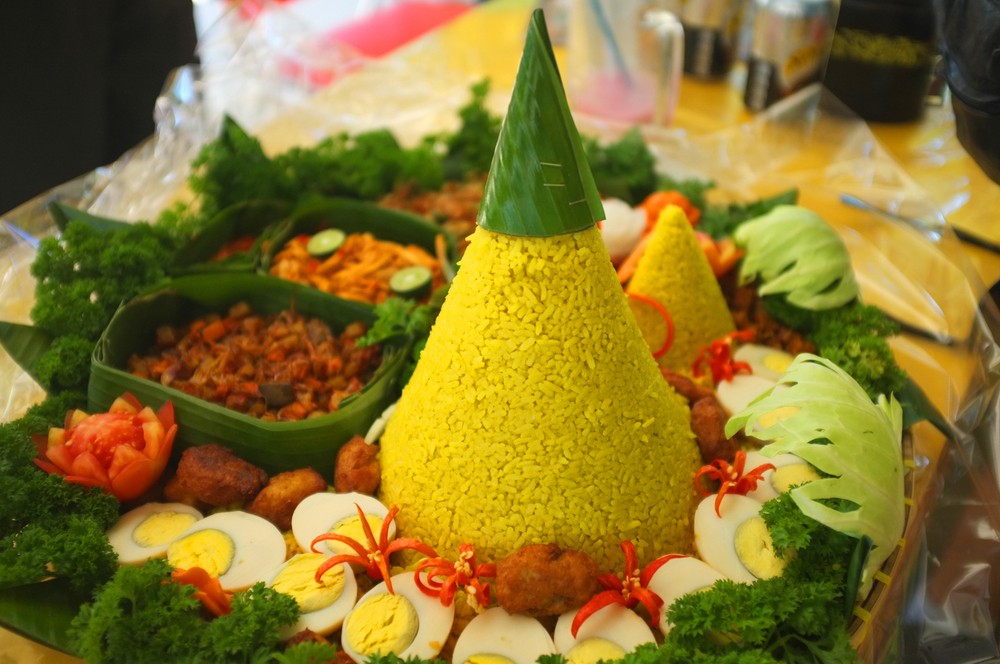Popular Reads
Top Results
Can't find what you're looking for?
View all search resultsPopular Reads
Top Results
Can't find what you're looking for?
View all search resultsFive interesting facts about ‘tumpeng’
For the residents of Java, Bali and Madura islands, tumpeng (a cone-shaped serving of yellow rice accompanied by assorted side dishes) is synonymous with joyful celebrations.
Change text size
Gift Premium Articles
to Anyone
F
or the residents of Java, Bali and Madura islands, tumpeng (a cone-shaped serving of yellow rice accompanied by assorted side dishes) is synonymous with joyful celebrations. As the 72nd Indonesian Independence Day draws near, those wanting to host celebration parties may want to include tumpeng on the menu.
However, before ordering tumpeng from the nearest catering company, let us learn some more about the philosophy behind the traditional dish.
It represent the relationship between humans and God
Murdjati Gardjito, a researcher at food and nutrition center at Gadjah Mada University (UGM), Yogyakarta, told kompas.com that tumpeng’s shape symbolizes the relationship between humans and God. She explained that there was only a single grain on top of the tumpeng, which represented God. Meanwhile, the bottom part of the dish, which consists of larger portions and various dishes, illustrated the character of human kind and the complexity of life.
Eat from the bottom
Despite the current popular ritual of cutting the top of the tumpeng and giving it to the honored guest in the room, Murdjati said that one should start eating tumpeng from the bottom. Since tumpeng represents the relationship between humans and God, slicing the top of tumpeng means cutting the relationship with the Almighty.
She explained that tumpeng should be eaten together with all the guests surrounding the dish.
Read also: Getting to know 'bir pletok,' Betawi's staple drink
Tumpeng was influenced by Hindu tradition
Though the dish originated on Java Island, tumpeng was influenced by Hindu tradition.
Dr. Ari Prasetiyo, Javanese language lecturer at the University of Indonesia (UI) said the concept of tumpeng derived from the old Javanese manuscript "Tantu Pangelaran," which regarded the peak of Mount Semeru in East Java, known as Mahameru, as the place of gods. Hence, tumpeng represents the shape of a mountain.
Tumpeng is an acronym
The etymology of tumpeng is uncertain. However, Ari said the word is an acronym from the Javanese sentence “Yen metu kudu mempeng,” which roughly means, “Make sure to give all you can when you come out.”
The meaning of tumpeng side dishes
Traditionally, tumpeng is served with seven assorted dishes, presenting different elements of foods, such as vegetables, sea and land animals. These dishes also offer various flavors, including sweet, sour and bitter, illustrating the different situations of life. (kes)











